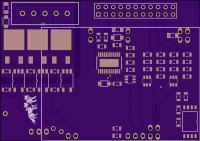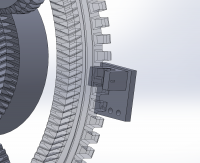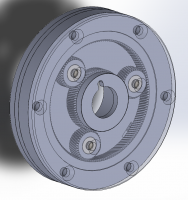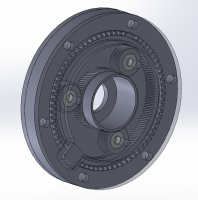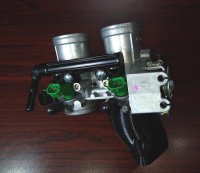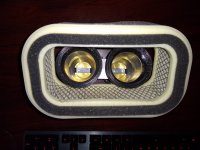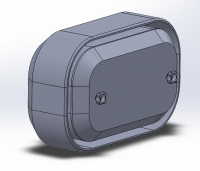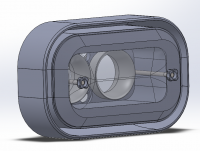The pump is being PWM controlled to regulated it's output pressure. 43.5psi is fairly standard.
So input power to the pump will be fairly proportional to the required flow.
Okay, I don't understand what you're asking about with the crank sensor.
Maybe it's just because I've had a few drinks this evening.
The stock crank wheel is a single tooth with two sensors.
I plan to use a 36 tooth (1 missing) wheel (plasma cut piece of steel) in it's place as that's an easy swap.
That gives me my crank pulses. If this was an even fire engine then I could run efi with only that (wasted spark).
But as it's odd fire so I'll need a single tooth cam sensor.
The easiest would just be a hall sensor above a cam lobe.
But as I was planning to make this available to other people I cam up with a way to run it off the tack cable.
It's 2.5:1 if I up that to 5:1 and use a 5 tooth encoder I've got my 1 pulse per cycle.
Speeduino looks for a pulse from the cam, then syncs on the next missing tooth on the cam sensor.
It exclusively uses the crank sensor for getting exact rotation.
I remember seeing Speeduino having an add-on module for that.
In general, I am super interested in how this pans out. Way too often people abandon FI projects.
Ya the official board has a socket you can replace with a dual channel VR conditioner.
The main board has the circuitry for hall sensors or optical.
I designed my own Speeduino board, (it's just over credit card sized) and ordered them from JLCPCB Thursday, I'll have them by next Friday.
My last EFI project was a 3000gt, until it spun a bearing it was happily running a custom Megasqurt board.
But I refuse to say how many half finished projects I have.

